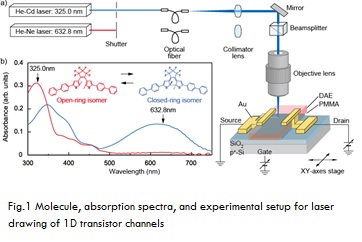
Yutaka Wakayama
National Institute for Materials Science (NIMS), Japan
Title: Photochromic organic field-effect transistors: Molecules, device properties and laser patterning of circuits
Biography
Biography: Yutaka Wakayama
Abstract
We developed an optically controllable organic field transistor (OFET) by employing photochromic diarylethene (DAE) molecules as a transistor channel layer. DAE molecules are known to undergo photochromic reaction, i.e., reversible conformational change between closed- and open-ring isomers by alternating ultraviolet (UV) and visible (VIS) light irradiation. We found that the drain current in the DAE-based OFET also showed reversible change accompanied by this conformational change; the closed-ring isomer produced by UV light exhibited a transistor operation under appropriate gate and drain bias voltages, meanwhile the open-ring isomer produced by VIS light showed no drain current. As a result, a remarkably high on/off ratio of 1,000 was achieved. The drain current modulation can be attributed to the drastic transformation in the π-conjugation system in association with the photo-isomerization. These results present two important messages. The first one is that this compound has dual properties: organic semiconductor and photochromism. The second is that a phase transition between semiconductor and insulator can be induced by light irradiation.
Based on these achievements, we demonstrate laser drawing of one-dimensional (1D) channels on an OFET with a photochromic DAE layer (See Fig.1). The main findings are: i) a number of 1D channels can be written and erased repeatedly in the DAE layer by scanning UV and VIS focused laser spots alternately between the source and drain electrodes, ii) the conductivity of the 1D channel can be controlled by the illumination conditions, and iii) it is possible to draw an analogue adder circuit by optically writing 1D channels so as to overlap a portion of the channels and perform optical summing operations by local laser illumination on the respective channels. These findings will open new possibilities of various optically reconfigurable low-dimensional organic transistor circuits, which are not possible with conventional thin film OFETs.


